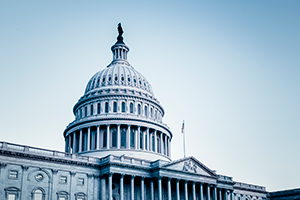As well as a new condition of registration on governance (covered elsewhere on the site by my colleague David Kernohan), the Office for Students (OfS) has announced a new approach focussed on providers “treating students fairly”.
There will be a new condition of registration – replacing existing ones on consumer protection guidance and student protection plans – aimed at institutions providing students with clear, easy to access information about what will happen if changes are made to their course, and fair processes for refunds and compensation and complaints.
Broadly, OfS will shift from expecting providers to pay “due regard” to guidance from the Competition and Markets Authority towards itself making judgements – both about compliance with consumer law, and some of its own higher standards for fairness.
It says that students have told the regulator that they want to receive a high quality education that reflects their financial investment and the experience they were promised, and that they want to be treated fairly – but that while many students do not explicitly refer to their experiences as consumers, words such as “fairness” and “honesty” are often used when they describe specific experiences and promises that have not been met.
As cuts continue across the sector, a heavy focus on financial sustainability both inside providers and the regulator almost certainly means an enhanced risk that students will feel unfairly treated when their courses or wider experiences shoulder the burden of savings reductions. Often those feelings will be legally justified.
But the jaw-to-the-floor astonishing thing – given OfS’ positioning as a risk-based regulator – is that none of the new proposals in this area will apply to currently regulated providers:
We recognise that proposing to strengthen protections and ensure consistency of information for students of providers registered under [new] proposed initial condition C5 would mean that different arrangements would be in place for different groups of students, depending on when their provider was registered.
Changes to ongoing regulatory requirements for registered providers are not within the scope of the current consultation. However our ultimate aim is to strengthen protections and ensure consistency of information for all students at all OfS-registered providers. In doing so, we would aim to align ongoing requirements for all registered providers, and we therefore envisage that having different requirements for different providers would be an interim position.
Proposals to achieve this alignment, and to ensure that all students are treated fairly on an ongoing basis, would form part of a future consultation on ongoing requirements for currently registered providers.
That’s right – well over five years since the bones of its new approach were set out in a paper to its board, in a context where the risks to students in this space have intensified significantly, better protecting students inside providers already on the register is parked as an “ultimate aim” with an unspecified date. And so for some, what follows below shifts from “need to get across” to “of mild passing interest for the time being”.
Doing so much harm, doing so much damage
The main thrust of the new approach to “fairness” – telegraphed by Director for Fair Access and Participation John Blake last summer – has a couple of key components.
First, rather than relying on the Competition and Markets Authority, or the courts, or National Trading Standards to take action or make a judgement over an issue, it’s taking that in-house.
And to go alongside that, it’s taking existing legislation – mainly consumer protection law, but there’s other bits too – and adding to it to form a new mega-definition of what it considers to represent “fairness”, partly to address the cat-nip nature of the “consumer” nomenclature.
As well as the engagement feedback it’s had from students, it’s doing this based on experience. Examples it has seen include omitting material information, like additional course costs or registration fees, leading students to make uninformed decisions.
It says it’s come across providers withdrawing offers after acceptance due to over- or under-subscription, leaving students unable to secure alternative options and stuck with financial commitments like accommodation. It has also come across – and referred to trading standards – like contractual terms that limit providers’ obligations during staff industrial disputes that may prevent students from receiving adequate teaching or compensation.
It’s also seen issues involving complaints processes that impose unreasonable barriers, like short submission windows, which hinder students from seeking redress and compensation.
And it’s picked up on false or misleading advertising, including claims about financial aid, course accreditation, or a provider’s status as a university, that may mislead students into pursuing programs that fail to deliver expected outcomes – where as a result, students may complete courses only to find that their certificates lack the value or recognition they anticipated.
One might ask, if it’s seen all of that in its current crop of registered providers, why it’s consulting on souping up its regulation only in newly registered providers for the time being.
But you don’t wanna get involved
But on the assumption (which, from experience, is a dangerous one) it gets there in the end, it’s worth looking at what it’s proposing in detail.
First thing on fairness. Currently, providers have to demonstrate compliance with consumer protection law when they apply to be on the register – but are not required to show how they more broadly ensure “fair treatment” of students.
This, it says, can result in situations where providers meet regulatory conditions but still have unfair policies or terms affecting students. So the proposed changes aim to better protect students by ensuring that providers’ policies and practices are fair and safeguard consumer interests consistently – avoiding a situation where students end up having to legally challenge unfair terms, and moving towards an approach of requiring providers to act fairly from the outset.
In that lovely OfS way, it will then assess whether a provider treats students fairly through a requirement that identifies when a provider does not treat students fairly. The old “I don’t know what a seminar is, but a 100 people in a room isn’t one” is the vibe here.
A bunch of negative behaviours will be set out, and assessments will evaluate whether providers meet the condition by identifying the presence or absence of those negative behaviours – a “streamlined process” that it says will result in a clear “satisfied” or “not satisfied” outcome.
The specifics of that run like this. If actions (or omissions) either fall within one or more descriptions, which it proposes to set out in a separate “OfS prohibited behaviours list”, or give rise to a likelihood of detriment or actual detriment to the student (except where reasonable in all the relevant circumstances), then the application gets the big red “unfair” stamp.
The definition of unfair treatment it’s proposing draws on consumer protection law and CMA guidance, which it says are already familiar to higher education providers (notwithstanding that a whole chunk of it is changing, which I looked at earlier on the site here). The key bit is that OfS is aiming to offer an additional layer of protection beyond editing legal requirements – the proposed list of negative behaviours is not confined to those explicitly prohibited by law.
And for consumer law fans, contract terms that may be regarded as unfair according to the Consumer Rights Act 2015 (the so-called “grey list”) will always be unfair in OfS-world – particularly over changes to courses, refund and compensation policies and contract terms and conditions:
We are proposing to consider documents beyond those that may ordinarily have contractual effect and the condition therefore has a wider scope than consumer protection law. Our initial view is that this is appropriate because students may rely on a wider range of documents in practice.
Some will regard that as overreach – others will feel reassured that the square peg/round hold of applying consumer law to the relationship between student and university will be properly addressed.
The other thing in here for consumer law detail fans is that the draft condition proposes that a provider would not be regarded as treating a student fairly if, in OfS’s reasonable opinion, its actions or omissions (including those that are proposed or likely) give rise to a likelihood of detriment or actual detriment to the student.
That’s odd because, as I explained on the site a few days ago, consumer law and the way the CMA is proposing to apply it is moving away from a “detriment test” and towards banning some behaviours regardless.
And excuses will be available – whether it is reasonable to argue that the course of action proposed or taken is, or was, necessary in the circumstances; whether those circumstances are, or were, in the control of the provider; and whether the provider is doing, or has done, everything possible to limit the extent of any detriment. That opens up all sorts of “what ifs” – including those on “but we were about to collapse and you told us not to collapse” – that OfS officials will doubtless be fielding on webinars in the coming weeks.
One curious aspect of the proposal – at least as it’s set out here – concerns the difference between an “initial” condition and an “ongoing” condition of registration. OfS is proposing new C5 on fairness explicitly here as an “initial” condition – so it’s principally proposing to look at a bunch of documents and policies before it lets a provider onto the register.
Of course not only can those policies change, it’s often the way they’re implemented (or not) and interpreter that matters more – the consultation is oddly silent on whether new C5 will also become an ongoing condition of registration that OfS could intervene on later.
In fact it feels like OfS is under pressure to get registrations going again, isn’t quite ready on this fairness stuff, and so has half slipped it into an announcement on new registrations for the time being.
I know you wanna live yourself
This being OfS, you actually have to fish your way to page 72 of the consultation document at Annex D to see what it’s proposing as prohibited behaviours – and it’s in seven sections, covering key documents, descriptions relating to conduct and omissions, the clarity and legibility of key documents and other information for students, policies on changes to courses, complaints processes, refund and compensation policies and fake reviews.
The first of those picks up much of the casework that it’s been referring to National Trading Standards – clauses that deny students the ability to offset payments due to provider failures, clauses that allow providers to withdraw offers at their discretion, particularly due to oversubscription, penalties for withdrawing or unmet obligations, and those that give universities the ability to terminate contracts or define terms at will.
There’s also stuff on contracts that limit students’ access to legal recourse or impose restrictive dispute resolution processes, those that allow providers to transfer their obligations to other entities without student consent, and ones that allow a provider to determine whether the services supplied conform with the contract.
In the actions and omissions bit, there’s claiming OfS registration or the right to use the term “university” without permission; offering degrees without appropriate authority or contracts; falsely asserting validation, accreditation, or endorsement by another body; displaying unauthorised logos, trust marks, or quality marks; and making definitive claims about future registration, university status, or authorisations that have not been granted.
Pleasing to these eyes at least is also advertising or promoting courses, services, or facilities without disclosing reasonable doubts about the provider’s ability to deliver them; intending not to deliver what was advertised and/or planning to provide an alternative, and applying pressure to force immediate decisions, such as falsely claiming that an offer or its terms are available for a limited time only, depriving students of the opportunity to make an informed choice.
There’s also communicating with prospective students in a non-English language without disclosing that services will be provided in English (!), presenting legal rights as unique features of the provider (!!) and using paid media content to promote services without clearly identifying it as advertising (!!!). It all goes on.
In fact this list gets better as you move down it. Publishing false or inaccurate information about market conditions or competitors to induce students to sign contracts, offering prizes or rewards without delivering them or without disclosing associated costs, and falsely describing services as free when hidden costs exist are in there too – as well as making persistent, unwanted contact with applicants or students through various communication channels – defined partly in reference to harassment legislation.
Maybe you work in a provider where you assume that the further down that list you get, the less likely it is that any of that happens. If you’re paying agents – either domestically or internationally – I can pretty much assure you that there’s a real iceberg below that tip.
Clarity and legibility covers off documents that are hard to read or use unclear language, or fail to specify how they apply to different time periods or categories of students. Complaints unfairness includes strict time limits, no clear contact point, a lack of clear and reasonable timescales, and the one derisory mention of the Office of the Independent Adjudicator’s complaints scheme.
And the section on changes hedges its bets a bit – there has to be clear stuff on the circumstances where changes may occur (like alterations to course content, qualifications, mode of study, teaching location, and fees), measures to address the needs of specific student groups, such as those with accessibility needs, and those policies must ensure that all students are treated fairly if such changes are implemented. Examples of where providers reserve too much of a right to make changes after the fact (“but all of those optional modules that you chose here for were not material”, and so on) are missing in action.
Oh – and refund and compensation policies have to clearly outline the circumstances under which students are entitled to refunds or compensation (along with the methods used to calculate both!), and picking up some of that DMCC 2024 stuff, fake reviews are called out too – which include falsely claiming authorship by a student, concealing incentives provided for reviews, manipulating reviews by hiding or removing negative ones, and not taking reasonable steps to prevent or remove fake reviews.
But could you forgive yourself
Some other aspects of note. OfS expects all providers to comply with the law and as a starter any provider found not to have done so gets that “not fair” stamp. That includes consumer protection law, the Education Reform Act 1988 (unrecognised degrees), the Companies Act 2006 (failure to comply with a Secretary of State direction to change a company name, or a name giving misleading indication of activities).
It’s also chucking in the Protection from Harassment Act 1997 to address circumstances where a provider imposes academic sanctions for non-payment of non-tuition fee debts, the thing that originally led the then Office for Fair Trading to start thinking about the way consumer law applied to students in the first place in the last decade.
Of particular interest is scope. It covers relationships with current, prospective, and former students – the first and third of that list theoretically pick up rights that they often don’t have now. It obviously applies to all modes and levels of study, including online, face-to-face, or hybrid delivery. It naturally extends to providers operating through partnerships or intending to do so. But it also includes ancillary services and the provision of student information – including marketing and advertising.
Ancillary services are defined here as services provided between a provider and a student as part of their higher education experience, including library services, disability support, scholarships, accommodation, and sports facilities:
These services can influence a student’s decision on where to study and their overall higher education experience. Unclear or inaccurate information about these services may affect a student’s choice of provider or course, while unclear or unfair terms of service may negatively impact their experience.
This is very good news for students who, from experience, are often told that stuff on or adjacent to that list can be cut because it’s not “part of the contract” or “on the CMA material information list” (it’s in the footnotes, actually). It should make it much harder to slash that intercampus bus, or cut 24 hour libraries down to 12.
I stand in front of you
What’s that you say? What happens to student protection plans? I’ve written extensively on the failure of that regime on the site before, suffice to say that the Higher Education and Research Act still mentions them, and OfS’ way around that is to argue that Condition C4, introduced in 2021, allows it to issue student protection directions if there is a material risk of a provider ceasing higher education provision – so C3 (have an SPP) is being deleted, and instead the suite of documents it will look at in pursuit of all of the above will, in effect, constitute a provider’s student protection plan.
This makes lots of sense – SPPs were inconsistent, protections were assessed on OfS’ judgement of provider risk rather than the granularity pockets of students face in a large provider, and in theory means consistency from their point of view.
So the silly SPP “risk assessment” goes – the one that right now probably says your university is swimming in cash as it announces a round of redundancies – and instead all of the above will have to appear on a single webpage to allow a “one stop shop” for students.
You might also wonder where that strategy proposal has gone – the one that Jo Johnson proposed before OfS was born, and the one that Gavin Williamson proposed too – a “model contract” that sets out students’ rights and obligations, alongside the obligations of providers. It’s being parked for now as a potential addition:
We may therefore explore development work in this area through further discussion and engagement with the sector, outside the current consultation process and alongside, rather than instead of, the introduction of a new initial condition of registration.
On reflection, one glaring omission in here concerns what a provider can and can’t do when it comes to fee increases for continuing students – a cynic might argue that that’s controversial enough right now without OfS wading in and… protecting students. But given Ofcom has now banned in-contract price increases altogether, it does look like a huge hole.
The other thing I’m surprised to see missing is the protection aspects of progression. There are plenty of providers that advertise a “BA in Wonkhe studies with an integrated foundation year” which technically and internally consists of an FY and a degree course – where the closure of the degree course seems to not trigger the same protections for those left high and dry as a second or third year disappearing. See also students who were “sold” a UG on the basis of progression to a vital PGT qualification.
It’s also disappointing to see little mention of the sort of pressure that students can be under to make what the CMA, in its draft guidance on the DMCC, would call a “transactional decision” like agreeing to a (contract) variation. CMA’s definition of consumer vulnerability and its insistence than in practice, offering students the chance to exit a contract if they’re not happy with changes is not one most can make is a huge issue across the sector right now – and both is and will be a big driver of those “dishonesty” and “unfairness” perceptions that OfS leads the consultation off with. The lack of mention of the issues in the ongoing Student Group Claim – especially when OfS was pontificating about those issues during Covid – is wild.
The single mention of the Office of the Independent Adjudicator (OIA) is also one to ponder on – partly because it’s the OIA that has tended to take the lead on judging (conceptually at least) fairness for students. Even if we set aside the politics, it won’t help for two sets of guidance to be floating around on what “fairness” means in practice – and students surely deserve these two grown-ups getting in a room to reconcile their advice on rights.
One other thing that continues to vex me about the proposals and the approach is the obsession with OfS’ powers over student power. Some of this sort of stuff is about providers doing the right thing – but so much of it is about students understanding their rights, so that when someone says “well all those optional modules aren’t contractual”, they can put up a fight.
It really wouldn’t be hard for OfS to write in something similar to that which we saw in Poland recently – where it’s the law that SUs are given the support to tell students about their rights (and responsibilities) in a way that barely goes near the catnip of consumerism. Beyond the wording of policies, some students are going to be treated unfairly sometimes – steps that ensure they know it beyond a feeling are surely a precursor to effective regulation. It’s hard to ever accept OfS announcements about student focus or student empowerment without that shift in approach that other regulators seem to understand.
As such, the framing of it all is a bit odd given, as I say, this is being proposed as an initial rather than an ongoing condition of registration at this stage – sat within this need to announce what it’s doing about a growing backlog of applications. Some of the wording only really makes sense in terms of what providers do in practice, not what some PDF says on a website. We’re left assuming that what’s in here will, at some later date, apply beyond the day OfS says yes or no to a new provider – but even critiquing that appears to be outside of the scope of the consultation.
It’s certainly interesting for OfS to be consulting providers, SUs and students and students on stuff that won’t apply to most of them, but might, in a slightly different way, apply them at an unspecified future time.
Overall, this looks like great news for students – finally, an education regulator properly thinking through the ways in which students are treated unfairly. But to return to the astonishing aspect of all of this – what is being proposed here is one set of rights for students in a new(ly registering) provider, and another set of much weaker ones for everyone else, all in the name of “fairness”, at just the point that providers are under pressure to not deliver on some of the promises they made to students.
The lack of justification or explanation for that is alarming – and while I often do my best to not speculate or attribute motive, it would be hard for students braving a read of this to conclude anything other than OfS has resolved that the financial sustainability horse needs to have fully bolted before the regulatory framework stable door is closed in their interests.







